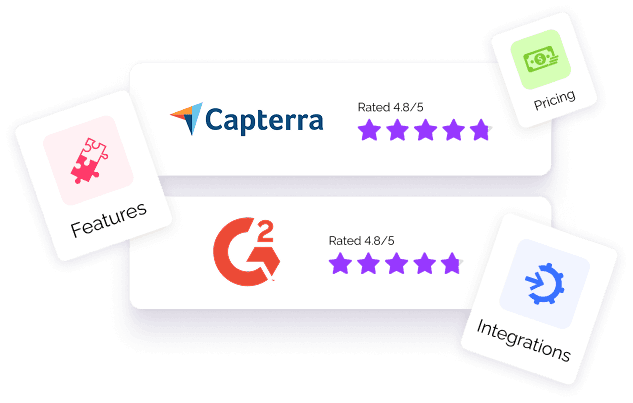What Constitutes Harassment in California?


Getting the whole workforce educated on what constitutes harassment in California is more important than ever before in history. Harassment can range from traditional bullying to more subtle sexual advances. With more information coming forth from the #MeToo movement, state governments are changing their laws on a regular. If you run a business in California, then you need to make sure your employees are compliant and properly trained with theCalifornia penal code harassment laws. Harassment in California can take the form of civil harassment, domestic violence, stalking, sexual, and workplace harassment. This guide will cover everything you need to know regarding harassment laws in California.
If you need help with getting your company compliant, then try EasyLlama's California Sexual Harassment Training program. We offer bite-sized episodes that can certify your entire team to meet California's mandatory laws and assist you with avoiding any fines.
The Definition of Harassment in California Law
Harassment can show in different ways, but what constitutes harassment in New York is generally the same for California. They fall along the lines of obvious physical attacks to repeated unwelcome phone calls or emails.
According to the penal code of California, any of the following acts can be classified as harassment.
Assault
This includes any intentional attempt to cause physical harm to another person. Most people think that assault means literally unlawful violence or attacking, but it can be throwing a household item at someone. Even if no harm is caused, the harassment is unlawful because there was a clear intent to hurt.
Battery
Battery is similar to assault, but this term is used when the attempts to cause harm are successful. For example, if someone throws a punch at another person and connects with their body, it will be classed as battery and harassment. This is common in cases of domestic violence, as well as general harassment in California.
Credible Threat of Violence
This is when someone threatens another and the court of law deems it credible. For instance, if someone makes a credible threat to kill or physically injure another person and they experience a reasonable fear for their own safety or for their immediate family, this can count as harassment in a California court.
Stalking
Stalking in the California penal code is classed as any repeated series of actions that may place a victim in fear for their own safety or their immediate family. It can include someone physically following another person, sending email messages, making repeated or phone calls, in an attempt to scare, intimidate, annoy or harass the recipient.
Harassing Behavior
This can be very similar to stalking. In general, harassing behavior is repeated actions that may distress, scare, annoy, or harass a reasonable person without any legitimate purpose. This may include someone making many unwanted phone calls to you, sending harassing text messages repeatedly, or consistently saying things you could find scary or troubling.
The Main Types of Harassment and Abuse Cases
There are five primary categories of abuse cases or harassment types that appear in California law.
1 . Civil Harassment 2 . Domestic Violence or Harassment 3 . Elder/Dependent Harassment or Abuse 4 . Workplace Harassment 5 . Sexual Harassment
Civil Harassment
A civil harassment case under California law is classed as when a person is harassed by someone they don't have any close family or romantic history with. This can include a neighbor, a roommate, or even a friend that you haven't been on a date with.
In other words, a civil harassment case is between two people who haven't dated and not related. If you are being harassed by a family member or romantic partner, this then falls into the category of domestic violence/harassment instead of civil harassment.
Los Angeles law states that civil harassment can range from a credible threat of violence made verbally to unlawful violence, such as battery or assault.
Domestic Harassment and Violence
Domestic harassment cases or domestic violence cases under the California penal code involve people being harassed or harmed by someone they know closely. This can include an immediate family member, a parent, child, sibling, wife, husband, former spouse, or someone you are dating.
They may involve physical harm from one person to another, unlawful violence, making a credible threat of violence, stalking, sexual assault, making harassing comments, or repeated behavior designed to annoy, intimidate, or frighten someone else.
Domestic violence is not only physical harm, it could also be verbal, emotional, or psychological. Abuse can take many forms, but the purpose is always to control the victim.
Elder or Dependent Harassment
Harassment laws in California state that elder harassment cases are when the victim of the harassing behavior or violent conduct is of the age of 65 or older. There are also dependent adult harassment cases which cover anyone aged between the age of 18 to 64 who is dependent on the aid of others for physical or mental reasons.
Again, there are cases in which dependent/elder harassment can overlap with domestic violence and civil harassment cases too. In general, these involve any situations in which an elderly/dependent person is harmed, threatened, stalked, or intimidated by the actions of another.
Workplace Harassment or Violence
Workplace harassment of a non-sexual nature is classified as either harassment, discrimination, or bullying. Basic workplace harassment is when an employee is treated worse because of a "protected characteristic" to the point it created an abusive working environment.
These are the protected non-sexual characteristics:
-
Race
-
Religion
-
Age
-
Physical or mental disabilities
-
Medical condition
-
Ethnicity
-
Ancestry
-
Genetic information
-
Veteran status
Check out this article to learn more about the different types of workplace violence.
Workplace Discrimination
According to California penal code, discrimination is when an employer takes an "adverse employment action" against an employee because of one of the protected categories. Some examples are when an employer fires, demotes, cuts pay or reschedules their shift because of a protected characteristic.
Bullying at Work
This is slightly different than discrimination or harassment because it only applies when an employee is treated poorly because of a non-protected characteristic. This can include verbal or physical harassment that creates a hostile work environment.
Sexual Harassment in the Workplace
California governmental penal code section 1290(J) states that it's an unlawful employment practice and a criminal offense for an employer to harass an employee because of his or her sex.
Sexual harassment in the workplace in California is covered by the Fair Employment and Housing Act (FEHA). Like other types, this is a criminal offense and can be punished to the full extent of the law, making the company potentially liable for damages.
An individual does not have to desire sex with another to have a sexual harassment case. It can be simply giving someone a hard time based on their life circumstances around gender or sex. Also, it's not always men harassing women. Men can harass men, women to women, and even women to men.
Sexual harassment is inappropriate, unwanted, or negative behavior based on the employees:
- Sex
- Gender
- Gender identity
- Gender expression
- Marital status
- Sexual orientation
- Related medical conditions or pregnancy discrimination
- Childbirth
If you or someone you know was subject to undesired sexual behavior, you need to get to the bottom of what the California law states before taking an employer to court. This will help you avoid attorney fees if you lose the case. However, this doesn't mean you shouldn't report the abuser to HR immediately.
There are two main types of sexual harassment in the workplace, quid pro quo and a hostile work environment.
Quid Pro Quo
A Latin term that translates to "A favor for a favor". California Civil Jury Instructions (CACI) number 2520 says that quid pro quo is superior for giving better working conditions, such as a job benefit, changing the job itself, or a promotion for a sexual favor. Luckily this type of harassment is less common these days.
Hostile Work Environment
An unwelcome sexual advancement that is severe or persistent. The inappropriate behavior can be from a manager, coworker, or customer of the business. This is the most common form of harassment in California which consists of harassment of a physical or verbal nature.
Sexual harassment in California can include any of the following acts:
- Derogatory comments or jokes sexual in nature
- Unwanted physical contact like touching, patting, or blocking movement
- Undesired sexual propositions
- Talking about sex or sexual acts openly in the workplace
- Threats against an employee if they fail to accept a sexual request
- Rude gestures, conduct, or behavior towards an employee or colleague
- Leering at a coworker
- The giving or displaying of sexual items in the workplace.
- Sexual messages, comments, or invitations of any kind
- Any kind of behavior or conduct that may be deemed sexual and inappropriate to a reasonable person
Taking Your Employer To Court
If you choose to take your employer to court, you have to prove 3 steps in order to win a settlement.
1. Unwelcome Harassment
First, the victim has to convince the jury that they dealt with unwelcomed advancements, comments or conduct. There has to be proof that the behavior was undesired, or else it's called contributing to bad behavior. For example, if someone texts you "Hey let's go on a date I make more money than your boyfriend" and you respond with "LOL I don't know ;)" then you don't have a solid ground in court. You're in the best shape when you have proof that the advancement was not welcome and you didn't contribute to bad behavior.
Sometimes an individual is okay with sexual advances at first but then circumstances changed, such as when someone gets married or the behavior rose to an unacceptable level. It's best if you have evidence to prove to the jury that this behavior was offensive to you. The best way to do this is to give a letter to HR and/or to the person who harassed you when it happened.
2. Severe or Pervasive Conduct
Next on our list is the employee needs to prove that the harassment was so severe or pervasive that it changed the working conditions to create an abusive environment. But when does an annoying or humiliating work environment turn into an unlawful abusive one?
The CACI number 2524 gives the jury some contributing factors for defining this:
- The nature of the conduct or comments from a "reasonable person's" standpoint. This is defining how serious the behavior was
- What was the frequency of the harassment?
- Was there physical touching or threats made?
- How offensive or humiliating was the conduct?
- Did the comments or behavior unreasonably interfere with their job performance? This last factor is incredibly important
3. Employer Knew or Should Have Known
The last point we have to prove is that the employer knew or should have known that the sexual harassment was taking place but didn't do anything about it. The easiest way is to first find out if the abuser was a manager or coworker. If a manager did the acts, then the company is liable for harassment. If the conduct came from a coworker, then you have to prove that the company knew about the harassment. You can do this by showing a written complaint to HR. Learn more about what you need in writing a harassment complaint letter here.
If a victim can't prove this then you must prove the company should have known. This is best done by collecting the testimonials of other employees who have been abused by the same person.
Duty to Prevent
The Fair Employment and Housing Act (FEHA) number 12940 (K) state that businesses have a duty to take reasonable steps to prevent sexual harassment in the workplace. For example, if a victim submits a complaint, then the employer has to separate the victim and the harasser before investigating. Sometimes employers will run false investigations to make a case to fire the victim instead of the harasser. This can happen if the abuser is well-liked, has the authority, or is making the company more money. If they are caught then the company will have to pay punitive damages, because almost nothing makes a jury angrier than a predator being kept on staff
Monetary Damages Victims May Win in Court
California law tries to help those who have sexually harassed or fired for complaining about it by making the employer compensate them financially.
Companies may have to compensate victims for:
- Emotional distress- Pain and suffering damages as a result of the harassment. Very real for many people and is very common.
- Economic damages - Lost wages for being fired after complaining about harassment. The more tangible the figure the better. If you lost your job for 6 months and you made $50,000 a year, then you could potentially get $25,000.
- Punitive - damages for punishing the employer for doing something really bad like keeping a sexual predator in the company.
- Attorney fees - California care and housing act allows you to get back your attorney fees on top of the last 3 financial compensations.
The time frame that a victim will receive compensation for sexual harassment in California often is way longer than it should be at roughly 1 - 2 years on average.
How Much Do These Cases Settle For?
It depends greatly, there are so many different factors that go into these situations. Additionally, many of the completed cases are kept confidential so we can't know. However, if you are suffering financially from a poor workplace environment due to sexual harassment, you need to take them to court.
Getting compensated for harassment is only half of the reason why you need to. What's more valuable is making the company learn a lesson and setting an example for other employers in California to take proper sexual harassment training seriously. If you are an HR director or business owner, this is not something to take lightly.
California's New 2019 Sexual Harassment Law
In 2019 Governor Gavin Newsom signed SB 778 California which is replacing AB 1825 from 2004. Basically, employers used to have to train supervisors on how to handle sexual harassment if the company had 50+ employees. This policy has expanded greatly. Now if you are an employer in the state of California and have over 5 employees, you have to train managers as well as supervisors for 2 hours every 2 years on sexual harassment in the workplace. Additionally, every non-supervisor employee now has to be trained for 1 hour every 2 years.
Now employers must provide training that includes:
- Gender identity
- Gender expression
- Sexual orientation
Businesses must provide employees with the Department of Fair Employment and Housing (DFEH) poster or fact sheet. Also, all employees must be trained statewide before the due date of January 1st, 2022.
After the #MeToo movement in 2018 the laws are changing quicker than ever. If you are an HR director or business owner, then you need to make sure your staff is trained and up to date with all the new laws or you risk huge compliance fines.
Handling this on your own can be a headache to deal with. Outsource the sexual harassment training part of your business to EasyLlama. We offer easy to understand sexual harassment training, with interactive videos and quizzes available in over 100 different languages. The lessons are divided up into micro-sessions that are easy to follow and effective at creating a more comfortable workplace.
The best part is they integrate with your favorite HR tools so you don't have to stress about the setup. For example, Chick-fil-A has employees that work on different shifts. With EasyLlama they easily send the required training to the whole workforce remotely and have them take the tests during their own shifts. Additionally, you can track their training completion and send reminders if they don't finish. This ensures that all employees are California law compliant without wasting time hunting everyone down to remind them.
Even with the new sexual harassment laws in place, if you or someone you know doesn't feel safe, or no one is helping them, they always have one last option.
Restraining Orders
Finally, if a victim keeps getting harassed inside or outside of work, they can legally protect themselves by getting a restraining order.
The main benefit of filing one is the victim and any of their family members who may have been harassed are protected from the abuser. This means you can legally stop someone from physical threats, unwanted calling, violent conduct, showing up to your house, stalking, or any other behavior used to annoy or harass. Sometimes restraining orders are called protective orders.
In legal terms, the person who makes the request and receives the order is called the 'protected person', while the one who is targeted by the effects of the order is the 'restrained person'.
What Does a Restraining Order Do?
These are some legal powers or forms of protection that you get from a restraining order:
- Personal Conduct - Helps to stop certain acts against the protected person. Such as sending messages, stalking, behavior designed to annoy, harass, make a credible threat of violence, physical attack, or sexual assault.
- Stay-Away - These legal orders are designed to keep a restrained person at a physical distance away from the protected person. They may be instructed for example to remain at least 100 yards away at all times, or keep clear of their home, workplace, vehicle, and other areas they commonly visit.
- Kick-Out - One of the most common forms of legal protection for harassment at home. The government requires the restrained individual to move out of the residence they currently share with the protected person until a court hearing is held to make a more detailed decision on the case. These orders are popularly used in cases of domestic violence, or elder/dependent abuse.
Conclusion
It doesn't matter you live in Los Angeles or all the way down in San Diego, it's comforting to know that we have laws in place to protect the people of California. However, the best way to deal with it is to prevent it from ever happening with education on what makes up harassment.
Those who feel that they are victims of domestic violence, workplace issues, civil harassment, sexual harassment, stalking, abuse, or threats, need to seek legal counsel. Especially if they have a reasonable fear for their safety, distress, pain, or discomfort.
An attorney or lawyer could be exactly what a victim needs in a situation like this. With the proper legal help from someone who understands harassment laws, they can be legally protected and financially compensated for their suffering.
Businesses need to play their part in ending harassment for all. Avoiding fines, court fees, and being HR compliant is important, but when employees are safe and comfortable, they perform their best on the job. This translates to happier employees and increased productivity, which is a win-win.
_





